Gibraltar's Secret Wars
Operation Algeciras: An Audacious Argentinian Plan to attack Gibraltar
In 1982, during the tense Falklands War between Argentina and Britain, Argentina conceived a clandestine operation known as Operation Algeciras. This audacious plan targeted British warships docked in Gibraltar with the intention of crippling them. Though ultimately unsuccessful, Operation Algeciras remains a fascinating episode due to its role in the larger geopolitical landscape of the Falklands Conflict.
By Nick Nutter on 2024-03-29 | Last Updated 2025-05-19 | Gibraltar's Secret Wars
This article has been visited 4,163 times

Gibraltar Frontier and Airfield
Background to the Falklands Conflict
The Falklands Conflict, a ten-week war in 1982, originated from Argentina's long-standing claim to the Falkland Islands (known as Las Malvinas in Argentina) and adjacent territories, South Georgia and the South Sandwich Islands, which were British Overseas Territories.
Argentina's invasion of the islands prompted a swift response from the United Kingdom. The ruling Argentine junta, led by General Leopoldo Galtieri, anticipated little resistance, a miscalculation shared by many.
They underestimated the resolve of British Prime Minister Margaret Thatcher and the surge of patriotism in Britain following the invasion. On April 5th, 1982, just three days after the takeover, Thatcher declared, "We must recover the Falkland Islands...for the people who live there who are of British stock." The same day, ships including HMS Hermes and HMS Invincible set sail, marking the launch of Operation Corporate, the mission to retake the islands and restore British control.
Do you enjoy my articles? For your reading pleasure, this website does not carry third party ads. You could help me write more articles by buying me a cup of coffee.
Argentina's Daring (and Ultimately Foiled) Plan to Strike Back in Europe


Admiral Jorge Anaya
During the Falklands War, Argentine Naval Chief Admiral Jorge Anaya devised a covert operation codenamed "Operation Algeciras" aimed at disrupting British naval resources in Europe. The plan was to target Royal Navy vessels in their home ports, forcing them to divert forces from the South Atlantic. Anaya believed this would ease pressure on Argentine forces in the Falklands.
Major ports like Portsmouth and Devonport were deemed too heavily guarded. Instead, Gibraltar was chosen due to its perceived vulnerability.
Admiral Anaya tasked Admiral Eduardo Morris Girling, head of Naval Intelligence, with formulating the plan and selecting operatives.
Operation Algeciras Team


Maximo Nicoletti
Leading the operational team was Maximo Nicoletti, a skilled diver and explosives expert with a colourful past.
Nicoletti, the son of an Italian World War II special forces diver, shared a family history of underwater sabotage. His own record, however, was far from illustrious. While a member of the Peronist Montoneros, a left-wing Argentinian guerrilla group, Nicoletti had targeted Argentine vessels and even attempted to assassinate Anaya's predecessor.
His activities included planting explosives on a police official's yacht in 1974, detonating a bomb under a destroyer in 1975, and a failed attempt to bomb the then-Navy Chief's yacht.
Despite his rebellious past, Nicoletti's skills proved valuable. He was apprehended by security forces but instead of facing execution, they offered him a chance to redeem himself by joining the mission.
Two other former Montoneros who had switched sides, Antonio Nelson Latorre and "Marciano" (whose real name remains classified), were also recruited.
Leading the overall operation, but not participating in the attack itself, was Hector Rosales, an Argentinian spy and former naval officer who served as a liaison with the military.
Operation Algeciras Plan


Gibraltar from Algeciras
The plan involved the four operatives traveling separately to Spain. Limpet mines from Italy would be delivered to the Argentinian embassy in Madrid. The team would then transport the explosives to a safe house in Algeciras, a city bordering the Bay of Gibraltar. They would acquire additional equipment like diving gear, fishing supplies, and an inflatable boat upon arrival.
Posing as fishermen, they would use the inflatable boat to observe Royal Navy movements in the bay and identify a suitable target. After receiving final approval from Admiral Anaya, the divers would enter the water near Algeciras at dusk, plant the limpet mines around midnight, and return by dawn. The devices were timed to detonate later that morning.
Following the attack, the team would flee overland, escaping through Spain, France, and Italy before returning to Argentina.
The details of Operation Algeciras bear a resemblance to a World War II operation conducted four decades earlier. In 1942, Italian divers from the Regia Marina used a submerged base, the tanker Olterra moored at Algeciras, to launch attacks on Allied ships in Gibraltar. Similar elements include the location (Algeciras), the use of limpet mines (which were manufactured by Italy in WWII), and even a familial connection between the leader of the Algeciras team and a member of the Regia Marina during Operation Ursa Major.
Operation Algeciras: Mission Preparations
On April 24th, 1982, Nicoletti and Latorre travelled from Buenos Aires to Malaga, Spain, using aliases and carrying specialized military diving equipment. Financed with US dollars, they rented a car in Estepona and established a base at a local hotel. After scouting the area for several days, they drove to Madrid to meet Rosales and Marciano. Daily communication occurred between the team and the Argentinian embassy's naval attache, who relayed information to superiors in Buenos Aires.
Two Italian-made limpet mines, each weighing seventy-five kilograms, arrived at the Madrid embassy via diplomatic pouch. The naval attache transferred them to Nicoletti's team. Transporting the explosives back to Algeciras proved risky.
Spain, hosting the 1982 FIFA World Cup, had heightened security due to potential Basque separatist activity. Police checkpoints dotted the roads, forcing the Argentinian team to employ a scouting tactic. Nicoletti, driving ahead, alerted the following vehicles (ten minutes apart) of checkpoints by turning around. On the road out of Madrid, Nicoletti stumbled on the first checkpoint and immediately executed a U turn. Unfortunately, the car behind him missed the signal and continued towards the checkpoint before doing its own U-turn. Fortunately for the team, the police officers remained oblivious to their manoeuvres.
Upon reaching Algeciras, the team strategically booked rooms across three separate hotels, consistently paying in cash with US dollars. They maintained close observation of naval activity in Gibraltar.
To facilitate their covert operations, they purchased fishing gear, an inflatable boat, and a telescope at a high-end department store, El Cortes Ingles in Algeciras.
Initial observations revealed lax security in the harbour, with only a single patrol craft present and no apparent sentries. By May 2nd, the team was prepared to execute the attack, awaiting a target and authorization.
Shifting Tides


ARA General Belgrano 2nd May 1982
Meanwhile the Argentinian task force sailed towards the Falklands. By early May, General Galtieri likely grasped the severity of the situation. At the same time, Peruvian President Belaunde was proposing a peace plan that the Argentinian high command viewed as a potential solution. Admiral Anaya, hesitant to escalate tensions, withheld approval for any aggressive actions against British forces, including those stationed in Gibraltar.
This stance changed dramatically at 3:57 pm on the 2nd of May 1982. The British submarine HMS Conqueror torpedoed and sank the Argentine cruiser ARA General Belgrano, tragically resulting in the deaths of 323 sailors. The following day, Admiral Anaya granted permission for Nicoletti's team to proceed with an attack, initiating the target selection process.
Potential Targets


HMS Ariadne
Anaya and Nicoletti considered a British minesweeper as the first potential target, but it was dismissed. A large oil tanker was the next potential target. While not British-flagged, Nicoletti believed it could be used to block the harbor. Anaya once again denied permission, citing the environmental catastrophe an oil spill would cause and the likely anger of the Spanish authorities, who despite their outward neutrality, were tacitly supporting Argentina. Finally, on May 10th, a high-value target arrived: HMS Ariadne, a Leander-class frigate, sailed into the harbour.
The green light was given for the operation on May the 11th. Latorre and Rosales, anticipating their departure, extended their car rentals by a week at the agencies. This decision would prove to be a critical misstep.
The Capture of the Operation Algeciras Team
Following a recent bank robbery by a group suspected to be Argentinian and Uruguayan, local authorities requested car rental agencies to be vigilant for the culprits. Manuel Rojas, a manager at one such agency, had previously reported a suspicious customer who paid in cash with US dollars and who had also rented vehicles from other companies concurrently. He was instructed to alert the police upon the customer's return.
Responding to Rojas' tip, the police apprehended Latorre and Rosales. They then proceeded to the hotel where Nicoletti and "Marciano" were found resting in their rooms, presumably preparing for a nighttime operation. A search of their vehicles uncovered limpet mines, a rubber dinghy, and diving equipment.
During questioning, Nicoletti confessed to involvement in a clandestine mission aimed at furthering Argentina's interests.
Secret Passage Home
Police Chief Miguel Catalan alerted Prime Minister Leopoldo Calvo Sotelo, who was coincidentally campaigning in Malaga at the time.
Spain found itself in a difficult situation. While they sympathized with Argentina's desire to reclaim the Malvinas Islands, especially considering the British hold on Gibraltar, openly supporting Argentina was out of the question due to their recent NATO membership (1982). Furthermore, Article 6 of the North Atlantic Treaty prevented NATO members from acting against Argentina, as it only applies to collective self-defence in member state territories north of the Tropic of Cancer.
To avoid complications, Sotelo ordered the four saboteurs' discreet return to Argentina. An arresting officer confided in Nicoletti that, had they known their intentions beforehand, they might have simply ignored their activities.
Nicoletti, himself, disarmed the mines as the police lacked the expertise. He retrieved his dry cleaning and, as a gesture of appreciation, treated everyone, including the officers, to lunch, paying in US dollars naturally.
The four men, still using their false passports, were escorted by air to Madrid. It was there, at the airport, that the authorities realized they had obtained neither fingerprints nor identification checks. A group photo featuring the four smiling saboteurs surrounded by their police escorts replaced individual mugshots.
The Argentinian commando team was then flown to the Canary Islands before their final return to Argentina.
Following the operation, Spanish authorities were instructed to destroy all documented evidence of the Argentinians' presence, including the group photo.
Aftermath
The 2003 documentary "Algeciras" featured interviews with key figures like Anaya and a noticeably enthusiastic Nicoletti. Significantly, during filming, British author and covert operations specialist, Nigel West revealed to the film crew, that British Intelligence had intercepted communications between Madrid and Argentina, which ultimately alerted the police. The car rental tale made a much better story.
A War Story Where Nobody Dies
The fate of Operation Algeciras, whether thwarted by British intelligence or a watchful car rental owner, remains a curious footnote in the Falklands War. Thankfully, unlike many wartime operations, this one resulted in no casualties.
The Best Guide to Gibraltar
First published in 2016, The Rock from Bottom to Top was due for an overhaul. We are pleased to publish a second edition on the 320th anniversary of Britain's capture of Gibraltar in 1704.
Completely updated with new images, stories, and anecdotes, Exploring Gibraltar is like no other travelogue or guidebook.
Exploring Gibraltar: The Rock from Bottom to Top is for anybody interested in the history, attractions, and culture of Gibraltar.

FREE to read on Kindle Unlimited, available as an Ebook download and full colour paperback.
Do you enjoy my articles? For your reading pleasure, this website does not carry third party ads. You could help me write more articles by buying me a cup of coffee.
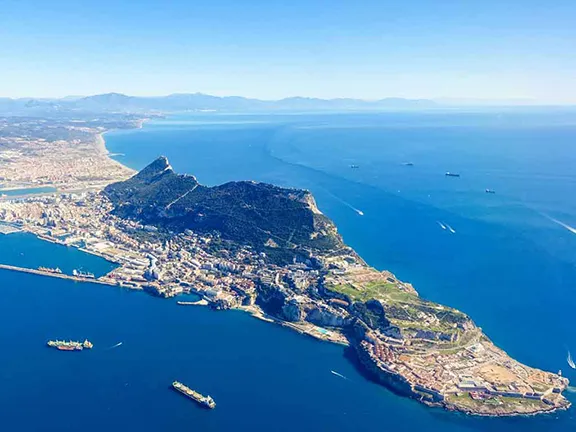 1: Defending Gibraltar in WWII
1: Defending Gibraltar in WWII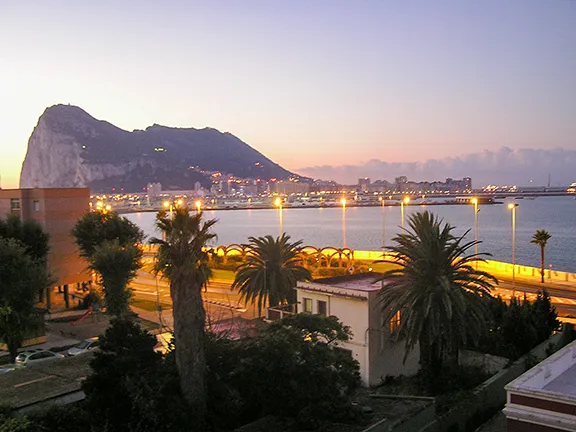 2: Operation Felix - Hitler's Plan to Capture Gibraltar
2: Operation Felix - Hitler's Plan to Capture Gibraltar 3: Operation Tracer - the Stay Behind Chamber
3: Operation Tracer - the Stay Behind Chamber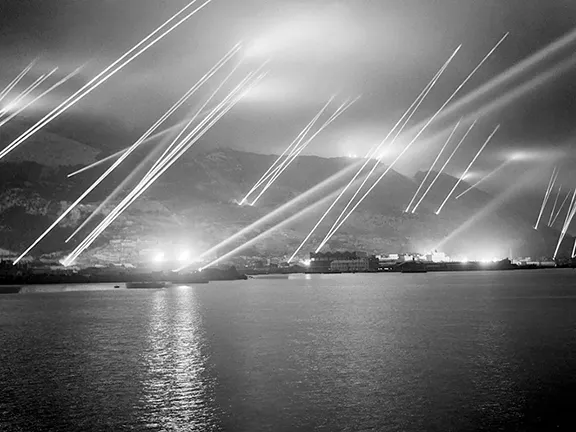 4: The WW II Evacuation of Gibraltar
4: The WW II Evacuation of Gibraltar 5: Gateway to Freedom for Escapers and Evaders
5: Gateway to Freedom for Escapers and Evaders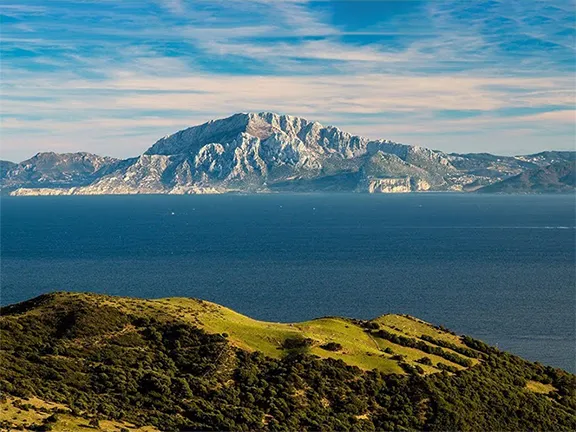 6: Gibraltar's Secret Flotilla during WW II
6: Gibraltar's Secret Flotilla during WW II 7: Covert Missions to France and North Africa
7: Covert Missions to France and North Africa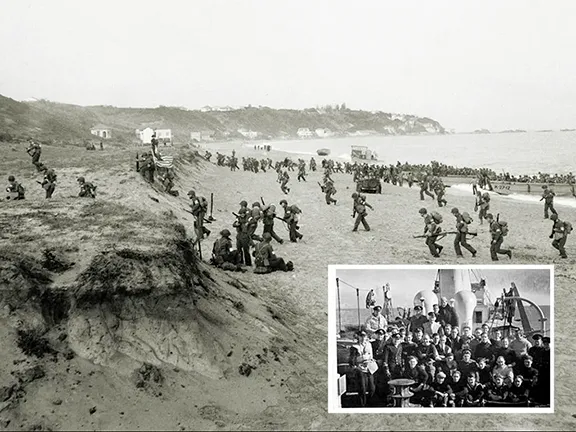 8: Letter from the Front - Personal Recollections
8: Letter from the Front - Personal Recollections 9: Operation Relator - SOE create mayhem in Gib
9: Operation Relator - SOE create mayhem in Gib 10: Operation Ursa Major - Prelude
10: Operation Ursa Major - Prelude 11: Operation Ursa Major - The Olterra
11: Operation Ursa Major - The Olterra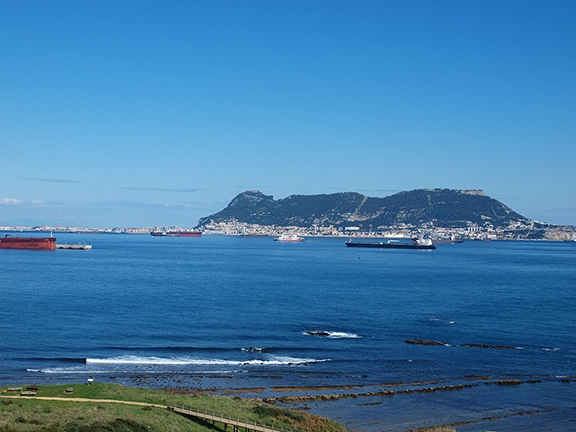 12: Operation Ursa Major - Execution
12: Operation Ursa Major - Execution 13: Operation Falaise - Zap a Nazi Spy Nest
13: Operation Falaise - Zap a Nazi Spy Nest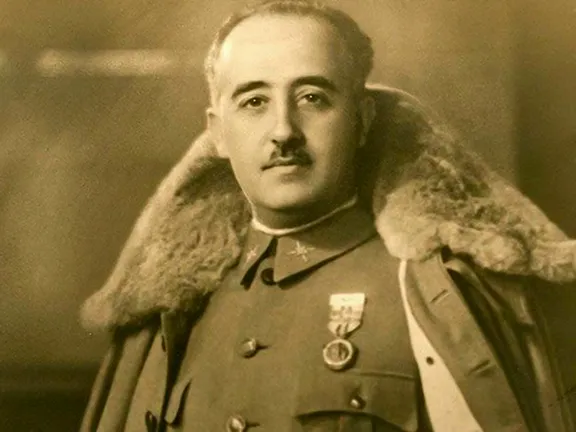 14: UK Policy towards Spain - Spanish Civil War
14: UK Policy towards Spain - Spanish Civil War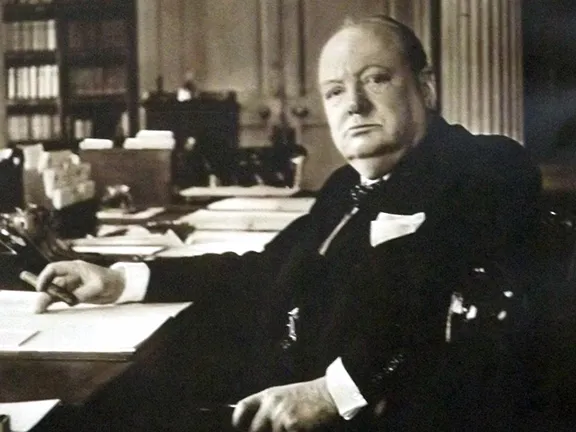 15: UK Policy towards Spain - 1940-1942
15: UK Policy towards Spain - 1940-1942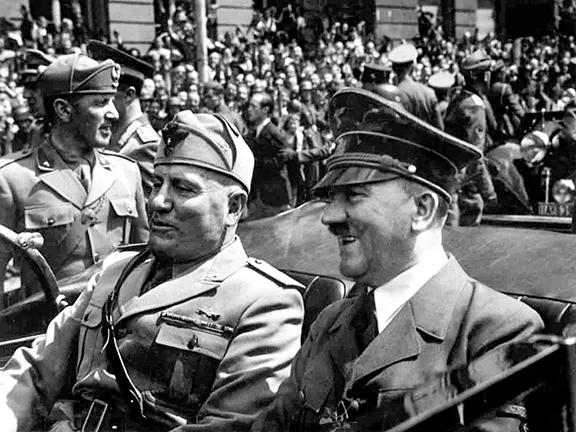 16: UK Policy towards Spain 1942 - 1945
16: UK Policy towards Spain 1942 - 1945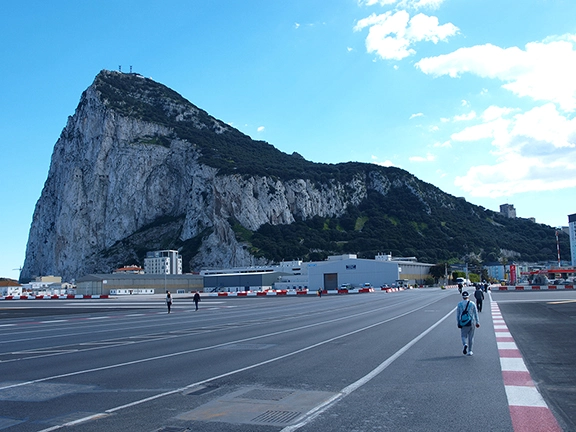 17: Abwehr Operations - Gibraltar WWII
17: Abwehr Operations - Gibraltar WWII 18: Counter Espionage - Gibraltar WWII
18: Counter Espionage - Gibraltar WWII